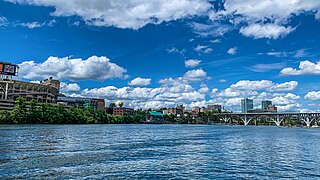
Knoxville is a city in and the county seat of Knox County, Tennessee, United States. As of the 2020 United States census, Knoxville's population was 190,740, making it the largest city in the East Tennessee Grand Division and the state's third largest city after Nashville and Memphis. It is the principal city of the Knoxville metropolitan area, which had a population of 879,773 in 2020.

The 1982 World's Fair, officially known as the Knoxville International Energy Exposition (KIEE) and simply as Energy Expo '82 and Expo '82, was an international exposition held in Knoxville, Tennessee, United States. Focused on energy and electricity generation, with the theme Energy Turns the World, it was officially registered as a "World's Fair" by the Bureau International des Expositions (BIE).

General James White Memorial Civic Auditorium and Coliseum is a multi-purpose events facility in Knoxville, Tennessee, owned by the Knoxville city government and managed by ASM. Its components are an auditorium with a maximum seating capacity of 2,500, a multi-purpose arena with a maximum seating capacity of 6,500, an exhibition hall and a reception hall. It was built in 1961.

AC Entertainment is a music promotion company based in Knoxville, Tennessee. They are the co-producers of the Bonnaroo Music & Arts Festival with Superfly Productions and the producers of the WayHome Music & Arts in Barrie, ON, the Forecastle Festival in Louisville, KY, Big Ears Festival in Knoxville, TN, and the Mountain Oasis Electronic Music Summit in Asheville, NC. They also specialize in venue management and services, event booking and production and event marketing and sponsorships. They are also talent-buyers for several venues across the Southeast.
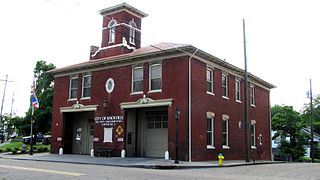
Mechanicsville is a neighborhood in Knoxville, Tennessee, United States, located northwest of the city's downtown area. One of the city's oldest neighborhoods, Mechanicsville was established in the late 1860s for skilled laborers working in the many factories that sprang up along Knoxville's periphery. The neighborhood still contains a significant number of late-19th-century Victorian homes, and a notable concentration of early-20th-century shotgun houses. In 1980, several dozen properties in Mechanicsville were added to the National Register of Historic Places as the Mechanicsville Historic District. The neighborhood was also designated as a local historic district in 1991, subject to historic zoning and design standards.

Sequoyah Hills is a neighborhood in Knoxville, Tennessee, United States, named for the Cherokee scholar Sequoyah, inventor of the Cherokee alphabet. It is located off Kingston Pike, between the city's downtown and West Knoxville. Initially developed in the 1920s, Sequoyah Hills was one of Knoxville's first suburbs and today is home to some of the city's most affluent residents. The neighborhood contains numerous notable examples of mid-20th century residential architecture, with houses designed by architects such as Charles I. Barber, Benjamin McMurry, and Francis Keally.
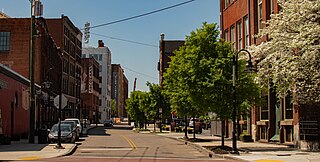
The Old City is a neighborhood in Knoxville, Tennessee, United States, located at the northeast corner of the city's downtown area. Originally part of a raucous and vice-ridden section of town known as "The Bowery," the Old City has since been revitalized through extensive redevelopment efforts carried out during the 1980s through the present. Currently, the Old City is an offbeat urban neighborhood, home to several unique restaurants, bars, clubs, and shops.

The National Conservation Exposition was an exposition held in Knoxville, Tennessee, United States, between September 1, 1913, and November 1, 1913. The exposition celebrated the cause of bringing national attention to conservation activities, especially in the Southeastern United States. The fair was held in what is now Knoxville's Chilhowee Park in East Knoxville.

The Knoxville City-County Building is a building at 400 Main Street in Knoxville, Tennessee that houses the offices of the city government of Knoxville and the county government of Knox County, Tennessee. It also houses the Knox County Jail. The building stands ten stories, and contains 534,000 square feet (49,600 m2) of office space. At the time it was built it was said to be the largest office building in Tennessee.
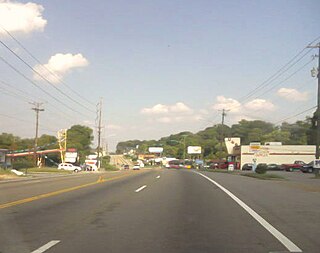
South Knoxville is the section of Knoxville, Tennessee, United States, that lies south of the Tennessee River. It is concentrated along Chapman Highway, Alcoa Highway, Maryville Pike, Sevierville Pike, and adjacent roads, and includes the neighborhoods of Lindbergh Forest, Island Home Park, Old Sevier, South Haven, Vestal, Lake Forest, South Woodlawn and Colonial Village. South Knoxville is connected to Downtown Knoxville via four vehicle bridges: the James C. Ford Memorial Bridge, the Gay Street Bridge, the Henley Bridge, by some incorrectly called the Henley Street Bridge, and the J. E. "Buck" Karnes Bridge. Parts of South Knoxville were annexed by Knoxville in 1917.
East Knoxville is the section of Knoxville, Tennessee, USA, that lies east of the city's downtown area. It is concentrated along Magnolia Avenue (US-70/US-11), Martin Luther King, Jr., Boulevard, Dandridge Avenue, and adjacent streets, and includes the neighborhoods of Holston Hills, Parkridge, Chilhowee Park, Morningside, Five Points, and Burlington. East Knoxville is home to Zoo Knoxville, the Knoxville Botanical Garden and Arboretum, and Chilhowee Park.
Lake Forest is a neighborhood in Knoxville, Tennessee located in the South Knoxville area. The area covers south of Knoxville Downtown Island Home Airport, then along Island Home Avenue, Chapman Highway, West Red Bud Drive, Stone Road, Oliver Road, Neubert Springs Road, Martin Mill Pike to Ogle Avenue, Doyle Street, Maryville Pike, back to Chapman Highway, then Moody Avenue to Seveirville Pike, East Red Bud Road, and Gilbert Lane.
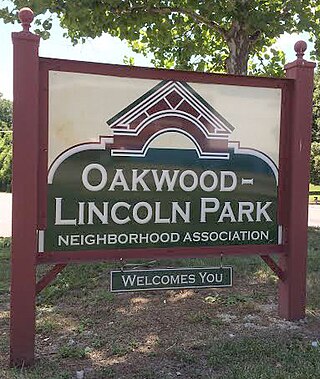
Oakwood-Lincoln Park is a residential and commercial neighborhood in Knoxville, Tennessee, United States that was developed in the early 20th century as two suburban neighborhoods.

The Knoxville riot of 1919 was a race riot that took place in the American city of Knoxville, Tennessee, on August 30–31, 1919. The riot began when a lynch mob stormed the county jail in search of Maurice Mays, a biracial man who had been accused of murdering a white woman. Unable to find Mays, the rioters looted the jail and fought a pitched gun battle with the residents of a predominantly black neighborhood. The Tennessee National Guard, which at one point fired two machine guns indiscriminately into this neighborhood, eventually dispersed the rioters. Headlines in the immediate aftermath stated five people were killed, while the Washington Times reported "Scores dead." Other newspapers placed the death toll at just two, though eyewitness accounts suggest it was much higher.
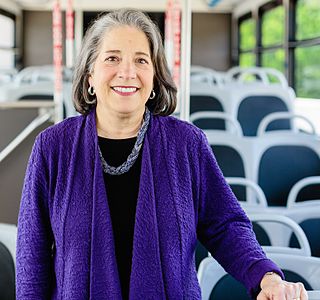
Madeline Anne Rogero is an American politician who served as the 68th mayor of Knoxville, Tennessee, elected in 2011. She was the first woman to hold the office and the first woman to be elected mayor in any of the Big Four cities in Tennessee. Before entering politics, Rogero worked as a community development director, non-profit executive, urban and regional planner, and community volunteer. She served on the Knox County Commission from 1990 to 1998, and first ran for mayor in 2003, losing to the later Governor of Tennessee, Bill Haslam. While Knoxville municipal elections are officially nonpartisan, Rogero is known to be a Democrat.

Becky Duncan Massey is a Republican member of the Tennessee Senate for the 6th district, encompassing Knoxville and Knox County.
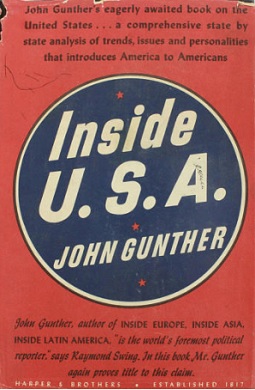
Inside U.S.A. is a nonfiction book by John Gunther, first published in 1947 and one of that year's best-selling nonfiction books in the United States. It describes the author's observations during 13 months of travel through the then-48 U.S. states beginning in November 1944.
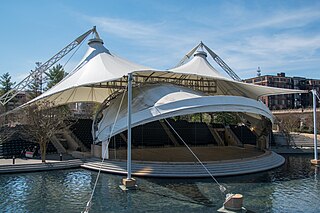
The Tennessee Amphitheater, also known as the World's Fair Park Amphitheater, is an open-air amphitheater located in the 1982 World's Fair Park in Knoxville, Tennessee.

The Appalachian Exposition, also known as the Appalachian Exhibition, was an event held in 1910 and 1911 in Knoxville, Tennessee's on property owned by Knoxville Railway and Light. The park grounds were 65 acres and included two lakes. The exhibitions demonstrated progress in Southern industry. Former president Theodore Roosevelt spoke at the 1910 exposition, and president William Howard Taft spoke in 1911.



















